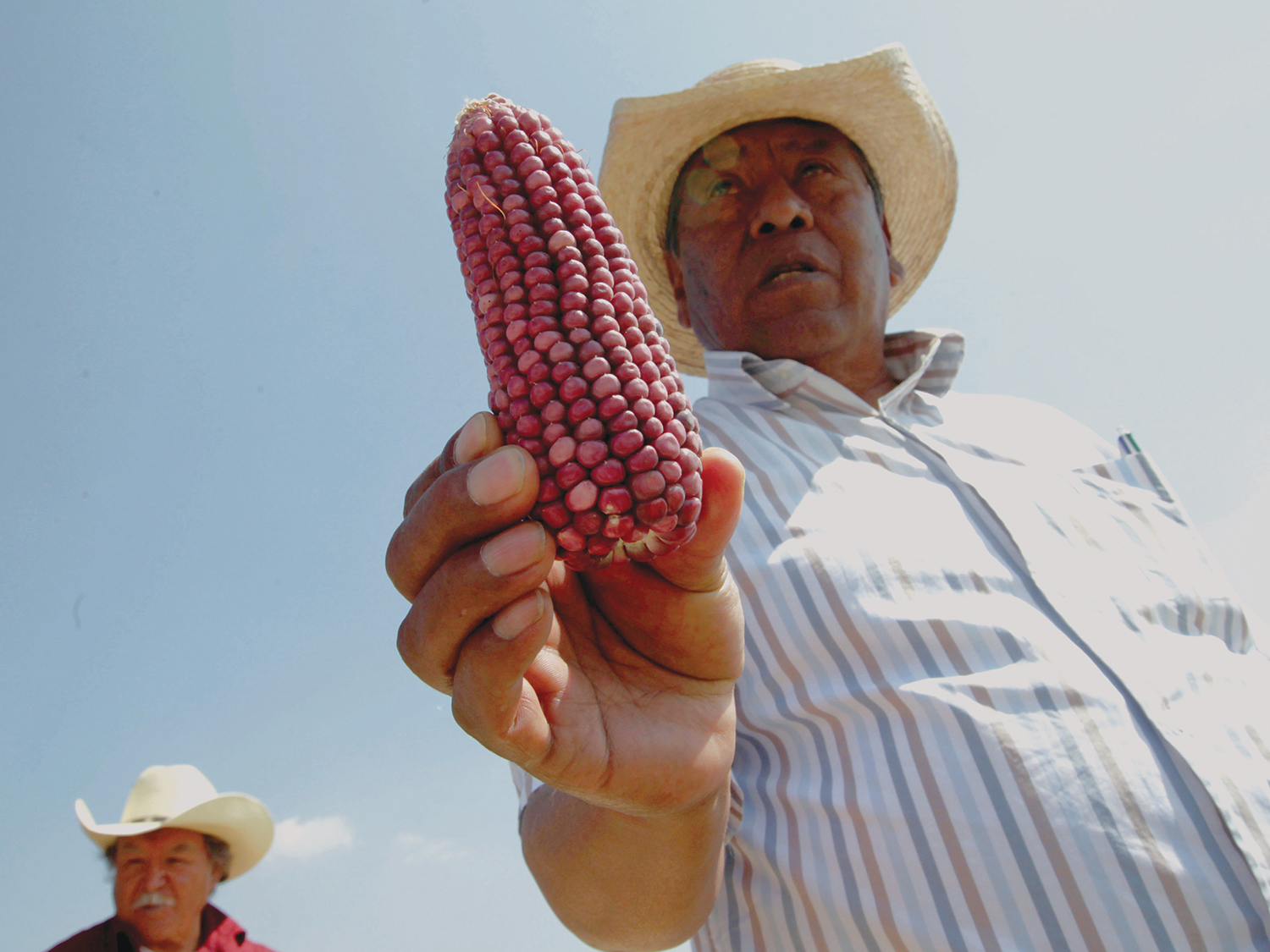

By David Alire Garcia — Under a scorching sun, Clemente Enriquez tips his wide-brimmed hat up as he proudly displays in an open palm the conico corn seeds he plants on his small plot in the rolling hills outside this village west of Mexico City. “These are very special,” said Enriquez, a 78-year-old farmer with shaggy gray hair and bushy black eyebrows, speaking on the edge of a neighbour’s field. “I’ve been growing these for years. I like the size of the seed and the colour, and the taste of the tortillas you can make with them.”
Lately, his enthusiasm seems to be catching on. A growing army of “heirloom corn” fans, from celebrity chef Rick Bayless to food giants like ConAgra to a group of dogged Mexican scientists, are aiming to unlock the ancient ingredient to bring tortillas with better flavour to the high-end foodie market while boosting sustainable local economies.
Entrepreneurs see a huge profit to be made in higher-margin tortillas and chips sold at restaurants like Bayless’ Frontera Grill in Chicago and Enrique Olvera’s Cosme in New York, and mass marketed at higher-end retailers like Whole Foods Market Inc. It can also boost the incomes of the poor farmers in Mexico who have been cultivating traditional maize for millennia.
Several of the nearly 60 native varieties, or landraces, of this heirloom corn often grow alongside corn’s ancestor teocintle, a skimpy stalk with a few meager kernels that Mexican farmers transformed in a dizzying series of improvements over some 8,000 years.
Centuries later, their distant descendents see a bright future for the traditional grains if obstacles can be overcome.
The first is whether Mexican scientists can hammer out a first-ever fair trade certification for traditional corn farmers, similar to certifications for organic coffee or chocolate. Once an accord is reached, which is expected later this year, organisers say a civic association or panel of experts will provide the voluntary certification.
Another hurdle is the farmers themselves, many of whom are not fully versed about the value of their crops abroad, or even the specific variety of corn they tend. They also must ease their reliance on middle-men buyers known as coyotes who have long been their main sales channel and could be the losers if the crop’s value is enhanced.
If successful, exports of Mexico’s gourmet maize could start to reverse a flood of cheap US yellow corn imports that have pushed more than 1 million Mexican farmers off their fields since the enactment of the North American Free Trade Agreement in 1994.
“I live in GMO corn-country and it is the most tasteless corn in the world,” Bayless told Reuters, referring to the sprawling fields planted with genetically modified corn around his hometown Chicago, Illinois, America’s second biggest corn-producing state.
But the bolita variety of heirloom corn from Mexico’s southern Oaxaca state is different, he says. “It has taste. That’s the whole thing.”
MEXICAN GOLD

The chef’s taste buds aren’t lying, the maize scientists behind the certification in Mexico say.
Commodity benchmark “Yellow 2” corn, a grain used mostly for animal feed, has little in common with Mexican corns that come in a kaleidoscope of colours and in some cases can be traced back for centuries to a specific mountain valley, says Flavio Aragon, one of the scientists behind the certification.
“The quality of Mexican corns is something else entirely,” he said.
Entrepreneurs putting big money on the line include Jorge Gaviria, chief executive of Los Angeles-based, privately-held Masienda, the first company to source the corn, whose ambition is to take on mass-produced tortillas with a tastier if pricier alternative.
“What’s clearly in our sights is getting into the tortilla market in a really big way,” he said.
US tortilla consumption is seen doubling to $30 billion by 2025, according to market research firm IndexBox.
Conagra Brands Inc, the maker of Chef Boyardee pasta and Hunt’s ketchup, late last year bought Bayless’ Frontera Foods, part of an industry trend to promote higher-margin products and boost sales as consumers crave more natural foods.
Around the same time, Bayless launched a line of premium tortilla chips using mostly bolita sold exclusively at Whole Foods. Conagra said in a statement that the chips are “performing well” but declined to provide sales data.
The new landrace maize certification was expected to be ready late last year, but building consensus on the fine print has caused a delay.
Organisers say the certification will provide farmers with a document that details the specific variety they grow, the traditional farming methods they use. It would also restrict sales to surplus supply to prevent farmers from selling what they would normally set aside for their families and animals, forcing them to turn to more processed foods in their own diets.
Last season, Mexico produced around 24 million tonnes of corn, or about 4 per cent of global output, and native corn surpluses are estimated at as much as 5 million tonnes annually.
Masienda, which sells directly to hundreds of restaurants, began buying Mexican heirloom corn three years ago. This season, its purchases will probably reach 2,000 tonnes, up five-fold since 2014, said Gaviria.
At the higher end, some heirloom varieties can already fetch around three times the price of conventional corns. That has farmers like 22-year-old Octavio Tejeda optimistic he can cash in on growing demand from around the world for tastier tortillas and most importantly preserve the strains.
“We’re going to keep our traditions alive and rescue the varieties of corn that are important to us,” said Tejeda, gazing out on a recently plowed field. “It’s our Mexican gold.” — Reuters
Oman Observer is now on the WhatsApp channel. Click here



